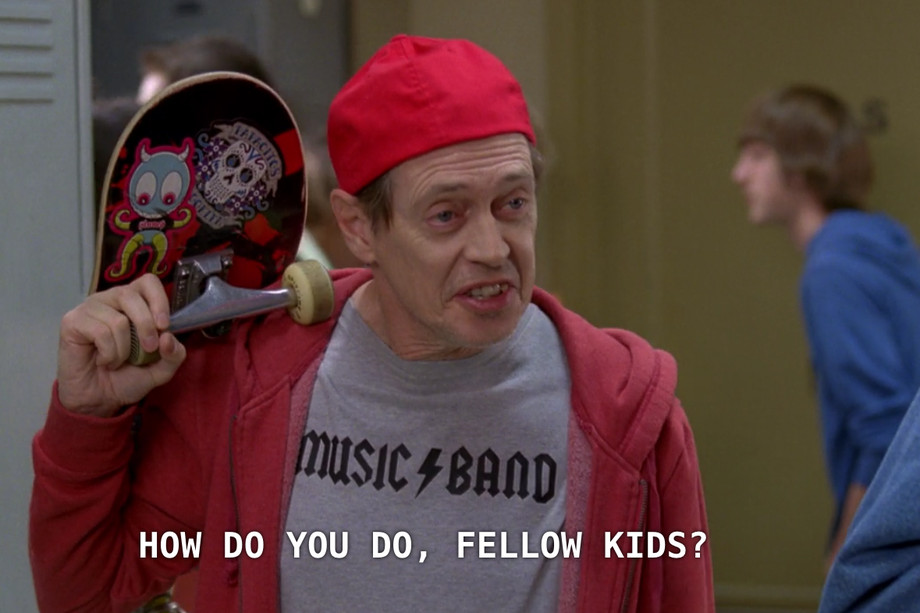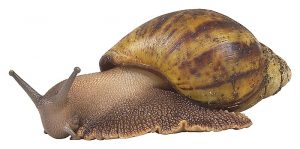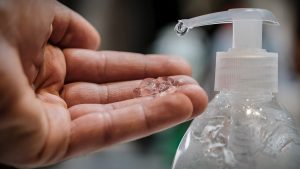The always awesome, and all around great dude, Matt Shipman pitched a bunch of questions to Lee-Ann Jaykus and I about COVID-19 and food safety. Here’s what we said: (from The Abstract)

Photo by Louis Reed on Unsplash
As the world grapples with COVID-19, people have a lot of questions about how to best protect themselves. Many of those questions have to do with food, and NC State experts are sharing the best available information on food safety, and what risks are associated with eating takeout and going to the grocery store.
Sharing this information is part of our mission as a land-grant university: we want to help people make informed choices about how to protect their health. We also want to help people get a better understanding of what we know and what we don’t know about the COVID-19 virus. And there is a lot we don’t know.
There are quite a few resources available online that can help readers better understand what we do know about COVID-19, such as this Q&A page from the World Health Organization. So we thought we’d talk to some folks at NC State about the basics of COVID-19 and (importantly) what we don’t know in the context of food safety, as well as what’s being done to fill those gaps in our understanding.
With that in mind, we took some time to pick the brains of Lee-Ann Jaykus and Ben Chapman. Both are trained microbiologists and are internationally recognized experts on various aspects of food safety. Jaykus, in particular, is a leading authority on food virology.
The Abstract: Okay, first question: what is “food virology”?
Ben Chapman: Food virology is the field of studying the biology, infectivity, transmission, epidemiology and control of human pathogenic viruses that are associated with the food we eat. Common foodborne viruses include norovirus and hepatitis A, but there are some lesser known ones like hepatitis E and astroviruses (a particular favorite name of mine) that we are learning more about and their impacts on the food system. This area of study is closely related to animal virology, as we look at public health as a combination of animal and human health – known in our world as “one health.”
Lee-Ann Jaykus: Foodborne viruses are diverse but have many features in common: non-enveloped structure; human-only transmission; fecal-oral exposure routes; a high degree of environmental persistence; resistance to commonly used food processing techniques and disinfectants, etc. SARS CoV-2, the virus that causes COVID-19, is structurally very different from these viruses and is not considered “foodborne” per se. Nonetheless, SARS CoV-2 has been particularly challenging because it is less fragile than most common respiratory viruses and there is still much that we don’t know about how to control it.
TA: Because COVID-19 is caused by a virus, not by bacteria, that means it cannot be treated with antibiotics, right?
Chapman: Yes. COVID-19 is caused by SARS-CoV-2, which appears to be closely related to another coronavirus that was the cause of illnesses classified as Severe Acute Respiratory Syndrome almost 20 years ago. As antibiotics or antibacterial soaps are created to disrupt certain biological functions of bacteria, they don’t have the same impacts on viruses.
Jaykus: That’s right. Viruses are obligate intracellular parasites; in other words, they require a live host cell in order to multiply. In fact, once they infect the host cell, they take over its functions, producing many new viruses, infecting surrounding cells and causing the symptoms of the disease. In general, the antibiotics we normally use are designed to kill or prevent the growth of certain bacteria and hence do not commonly work on viruses.
Chapman: There are antiviral drugs however, and applying these compounds as treatment for COVID-19 is something that medical researchers are investigating.
TA: So, the available resources addressing food safety and COVID-19 are based on the best available science. Given that COVID-19 has only been around for a matter of months, how much science is available right now?
Jaykus: Not much, although I think it is very safe to say that this is not a foodborne virus in the traditional sense of the term. And if the virus were present in a food, it would still not be likely to infect the person eating that food – although it’s probably not impossible. However, for such an infection to occur, all the right factors would need to be in place. It is so much easier for the virus to jump from one person to another by close personal contact and respiratory secretions. I believe putting our attention on foods takes attention away from what we already know works, which is social distancing and isolation.
Chapman: There are researchers around the world investigating the virus daily, helping us determine some of the very basic characteristics of SARS-CoV-2.
We also have a body of literature on SARS-CoV-1 that is giving us some indication on environmental stability, infection, shedding, symptoms, transmission, inactivation and other control measures that may apply to SARS-CoV-2.
The other big data set we’re all watching in real time is from the epidemiological studies that are coming out of some of the earlier clusters of outbreak. Work out of Wuhan, Washington State and cruise ships are all adding to what we know. But yeah, being only months into this, there’s not a rich body of work to make decisions on. Comparatively, we have decades of data on norovirus outbreaks to make decisions on – but even with that virus, it took many years to figure out how to grow it in a laboratory. So what we know about SARS-CoV-2 is really still in its infancy.
TA: How has our scientific understanding of COVID-19 and food safety evolved in recent months, or even in recent weeks?
Chapman: We’re relying on the data we do have in hand – that epidemiology is pointing largely to person-to-person transmission from symptomatic and asymptomatic individuals. We’re also drawing on the library of literature on SARS-CoV-1 and other respiratory viruses. As of right now, CDC and FDA have been fairly clear that they don’t have any data (epidemiological or otherwise) that is showing that food or food packaging is a primary risk factor for illness. It’s not to say that transmission isn’t possible (we don’t use a lot of absolutes in the scientific world), but the evidence currently isn’t pointing to food as something we need to manage differently than we normally do for other foodborne illnesses. But every day I think we are actively looking to make sure we haven’t missed anything.
Jaykus: Quite frankly, and rightly so, we are not looking at SARS-CoV-2 as a foodborne pathogen, so we haven’t really studied it in the food system. Food companies are focused largely on preventing aerosol or tactile (hands or surfaces)-based contamination of foods and trying to protect their workforce from infection, which in turn protects the food they come into contact with. Using the controls currently in place and mandated by federal, state, and local food safety and public health authorities remain the best approaches: adequate and frequent handwashing; prevention of bare hand contact with ready-to-eat foods; surface cleaning and disinfection; and (uniquely), liberal use of hand sanitizers. Add to that social distancing and exclusion of ill or infected food workers.
TA: How have we been able to learn even this much in such a short period of time?
Jaykus: It’s a pandemic. Scientists are racing against the clock. It is a different world when everyone is in it together and we’re saving lives.
Chapman: It’s such a global focus, like nothing we’ve ever experienced before. Everyone is generating and analyzing data as quickly as possible. Keep in mind that in many places people don’t have access to their labs, so that is definitely slowing the progress down. Still, there’s a ton of COVID-19 research coming out on a daily basis.
But there are lots of caveats to everything that has been done. For example, we are just beginning to really know what this virus is all about and still need to confirm that it acts like other coronaviruses. And we don’t have all that data in hand yet.
TA: What are some of the outstanding questions that we’re working to understand? Who’s taking the lead on addressing those questions?
Jaykus: From a food-safety perspective, characterizing the efficacy of various disinfectants is critical. For instance, we just don’t know if there is a “best,” or even a recommended, cleaning and sanitation regimen for food processing. I think that is a critical question right now. The facemask debate is a problem; I can see arguments both ways, but we have to be careful not to use face coverings only to find that they are a way to spread the virus.
It appears that the fecal matter of some infected people contains evidence of the virus, but we don’t know if that virus is actually infectious. Answering this question would allow us to better understand transmission in general.
Development of an inexpensive and very rapid test method that can be used to screen pre-symptomatic individuals or those shedding virus after recovery would be good for all, and especially helpful for critical infrastructure, including food manufacturing. Having such a test will be really important as we move toward lifting social isolation restrictions.
Chapman: Another big one is how long the virus remains viable on different surfaces (including food and packaging). There are a few studies out there that address this, but there are still a lot of unanswered questions. We need to know how long the virus remains viable not only on different materials, but under various temperature and humidity combinations. Another line of questioning involves the extent to which heat, disinfectants, UV light and pressure can inactivate the virus. And, of course, questions surrounding transmission, such as why there are seemingly so many asymptomatic individuals who are shedding virus.
TA: Why are those things important?
Jaykus: Because understanding these issues will provide scientific evidence upon which we can make better recommendations for controlling the spread of the virus.
TA: Where can people go to keep track of new information as it becomes available?
Chapman: The CDC is a go-to source, because they are proactive about posting new information daily. And NC State also has a bunch of resources available online.
Jaykus: There are good resources for tracking the pandemic here and here. People may also want to visit the Association of Food and Drug Officials Coronavirus website.
TA: What advice do you have for people who are trying to figure out, for lack of a better term, how to eat during a pandemic?
Chapman: Remember that the biggest risk factor is being around other people, so reduce those interactions as much as possible. Limit contact by using delivery or curbside pickup of food. Handwashing and sanitizer are excellent secondary control steps.
Jaykus: We all have to eat and food is low risk for transmitting this virus. Use of surface disinfectants and particularly, frequent handwashing and sanitizing is a useful protection. But really, your best protection is to put your efforts into the controls recommended by public health officials: i.e., limit your contact with other people and, when that is not possible, maintain social distance.
 The conversation goes to pizza and COVID-19 (Australian and Jersey), Thanksgiving plans (or lack thereof) and eating just black licorice as nutrient source. The episode ends with a discussion about number and size of COVID-19 clusters of in various food settings.
The conversation goes to pizza and COVID-19 (Australian and Jersey), Thanksgiving plans (or lack thereof) and eating just black licorice as nutrient source. The episode ends with a discussion about number and size of COVID-19 clusters of in various food settings.



 The guys end the show talking about sous vide meat donuts and Cyclospora in salad mixes.
The guys end the show talking about sous vide meat donuts and Cyclospora in salad mixes.

 They then talk about how COVID-19 is affecting essential employees, and what that means for the food industry and supply. Ben and Don talk about what they think about pausing inspections and go into a deep dive about a blip in recalls. The discussion shifts to chicken liver pate and forcemeats. The show ends with the guys talking about Adam Schlesinger and John Prine.
They then talk about how COVID-19 is affecting essential employees, and what that means for the food industry and supply. Ben and Don talk about what they think about pausing inspections and go into a deep dive about a blip in recalls. The discussion shifts to chicken liver pate and forcemeats. The show ends with the guys talking about Adam Schlesinger and John Prine.
